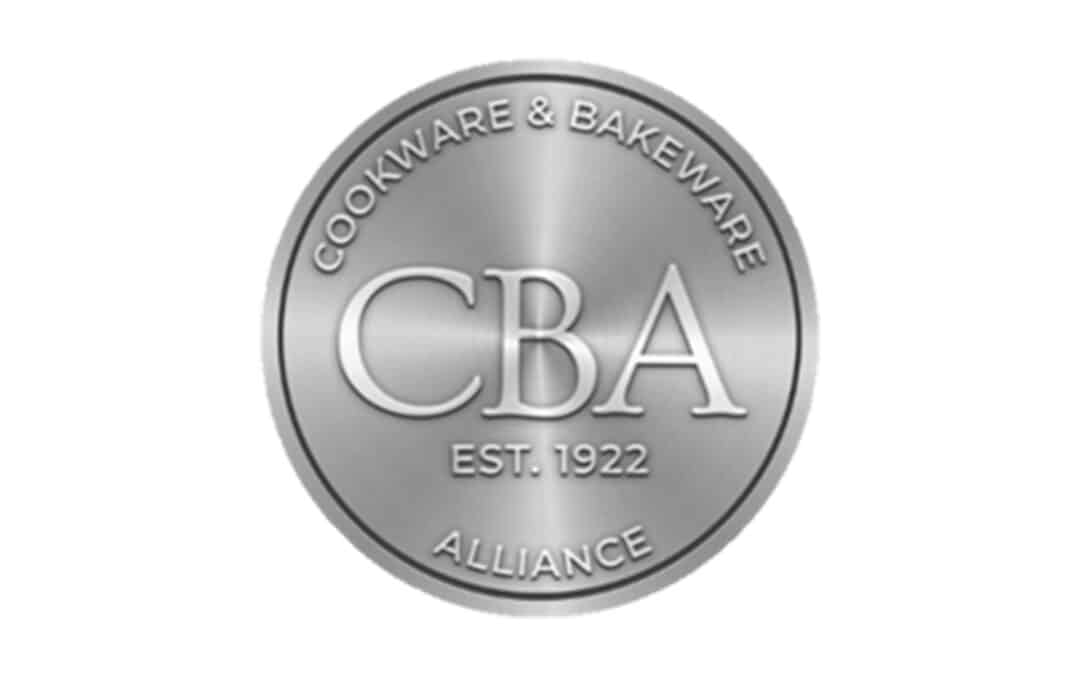Sessions on the second day of the Inspiration Theater at The Inspired Home Show dealt with two areas of regulatory action critical to the home goods sector, one involving PFAS and the other concerning wood products: the Lacey Act. Consideration of each is important to ensure any given company doesn’t breach regulations and face penalties for non-compliance.
PFAS Regulatory Update for the Housewares Industry
Fran Groesbeck, Cookware and Bakeware Alliance
In the seminar, PFAS Regulatory Update for the Housewares Industry, Fran Groesbeck (pictured top left), managing director at the Cookware and Bakeware Alliance, attorney Tom Lee of BCLP Law (pictured top right), who has extensive PFAS expertise, and Tobias Gerfin, CEO of Kuhn Rikon AG (pictured top middle), provided an overview of the latest developments regarding government action.
Groesbeck said that PFAS regulation remains a key issue for the Cookware and Bakeware Alliance and the housewares industry, but a fast-moving one. The organization has published a series of PFAS education documents to help keep the industry up to date. The first is a high-level assessment of the PFAS issue, the second reviews human health considerations and the most recent looks at life cycle assessments and alternatives. A fourth is coming on socio-economic impact.
She made the point that PFAS has become a target of legislation and regulation that covers a large family of chemicals that exhibit “significantly varied properties, and their subgroups have very unique and distinct differences.”
However, the government, whether federal or state, has in many cases lumped together a class of products as distinct as various species of mushroom, which include 14,000 distinct varieties having a few toxic members but overwhelmingly a cast of benign or beneficial constituents. The thousands of PFAS chemicals are similarly varied in their constituent parts, she said, and the science used to evaluate them doesn’t suggest a reason to condemn the class of chemicals.
As for government action, Lee says the United States Environmental Protection Administration has been through a period of information gathering that began in January 2011 and continued to December 2022, trying to get an idea about what PFAS was moving through the United States and whether made here or abroad as well as current and future use, and end of product life information. The problem is that for much of that period, Lee noted, PFAS was not an issue in most industries more than two years ago, so product content records were limited.
“PFAS wasn’t on the radar, so records are almost certainly going to be very limited when it comes to historic PFAS content,” he said.
Soon, companies, including cookware companies that have been using PFAS have to provide EPA with documentation about the chemical. The EPA reporting window opens in November and closes in May 2025. The best way to address the requirement, Lee said, is to have all relevant data about PFAS product content collected, organized and ready to translate into the portal by the end of this calendar year so EPA can evaluate and accept information provided sooner rather than closer to the deadline.
“EPA portals are notoriously challenging,” Lee said. “So, if you are only starting reporting in May, that’s very concerning.”
The reporting requirements are complex and companies can reach out to his firm and/or the CBA for help in getting organized, he said, and there are even some exemptions. However, the definitions of requirements and compliance can be vague. EPA does require proving information that is known or “reasonably ascertainable,” which does require vendor outreach, and documentation from any acquired companies or other business entities, even if a transaction didn’t come with all the books and other information a full search requires. So, companies have to do a best-effort investigation.
Another concern is privilege. Companies should comply in ways that allow them to keep the information privileged as, otherwise, the data provided could be used in lawsuits against the provider.
State laws are another concern. In one example among several, Minnesota has a prohibition on intentionally added PFAS that goes into cookware, one that takes effect in January 2025 and that applies to the sales or distribution of cookware that contains intentionally added PFAS. Again, there may be conditional use exemptions, but for all consumer products, Minnesota has set 2032 as the absolute cut offer for intentionally added PFAS.
Effectively, Lee said, Minnesota’s is a reformulation law. California has been developing a labeling law akin to Proposition 65 that creates some challenges.
For his part, Gerfin said in 2023, the European Union launched a proposal to restrict “thousands of applications of PFAS.”
From March through September, a consultation process occurred that included 5,600 individual feedback examples generating 100,000 pages received by the Risk Assessment Committee and Socio-Economic Assessment Committee under the EU.
The FEC response to the consultation process included, as its key elements, that PFAS fluoropolymers don’t meet the criteria of unacceptable risk under EU law and should be exempted from proposed restrictions. In addition, FEC stated that there is no scientific basis to conclude that PTFE-coated cookware and bakeware pose a risk to humans or the environment in the use phase. Also, PFAS has limited environmental impact overall and can be reasonably addressed and managed.
Gerfin pointed out that the EU measure remains a proposal and that the regulatory process is likely to be prolonged in part due to the response, but it remains a concern that has to be monitored and addressed as it evolves.
The Lacey Act and the Home and Housewares Business
Ashley Amidom, International Wood Products Association
Craig Brightup, International Housewares Association
Although lesser known, the effects of the Lacey Act as it will be applied to housewares will be significant. Ashley Amidon of the International Wood Products Association and Craig Brightup, who represents the International Housewares Association in Washington, DC, provided insight into the issue in the session The Lacey Act and The Home and Housewares Business.
Brightup said that after looking into the subject of the Lacey Act, many housewares companies may realize they are covered and that “and this is a very serious topic.”
Although the Lacey Act goes back to the turn of the last century, Amidon said that only in 2008 did wood and plant products come under its mandate. Since then, the act has made it unlawful to import, export, transport, sell, receive, acquire, or purchase in interstate foreign commerce plants, fish, or wildlife taken, possessed, transported, or sold in violation of any federal or state law or regulation of violation of any foreign law. The act goes through the entire supply chain, so the importer of record isn’t the only one that can be held liable, something Gibson Guitars found out when a small supplier imported wood products in violation of the law, Amidon pointed out. The U.S. Justice Department took enforcement action against the company, resulting in $350,000 in penalties and community service. Criminal as well as civil penalties are possible under the Lacey Act.
Under phase seven of the law, which takes effect six months after it is entered into the Federal Register, cookware products fall under its requirements, whether the products are cutting boards or cooking tools made of wood or bamboo. Entry into the register is expected over the next two months.
The Lacey Act, as applied to housewares, provides two primary responsibilities: to conduct legal trade in plant and plant products along the entire supply chain and make a Lacey Act Declaration, a requirement that has been phased in gradually and must be completed by the importer of record even if the whole supply chain must be compliant with the law. The Lacey Act requires due care to be applied to finding out how plant products are grown, harvested and moved through the supply chain, even if it is an imprecise standard that doesn’t provide complete protection.
The Lacey Act has exemptions and nuances itself. Olive oil is exempt, but not olive wood, while wooden pallets used for dunnage are exempt, but those imported for use in dunnage are not.
However, the Lacey Act is rigid where it applies.
“Lacey is a strict liability law,” Amidon said. “You do not have to know about the crime being committed to be found guilty. This law does not play around.”
To begin addressing their Lacey Act requirements, housewares manufacturers and sellers should understand what’s happening in the supply chain, with products and with partners. More specifically, companies should communicate their desire to only trade in legally harvested wood, identify the species involved in their products and ask questions about where raw materials are harvested, as well as about supplier due care systems. They should also consider tracking and traceability issues and procedures, require critical supply chain suppliers to provide greater documentation and consider scientific tools available. Then they should consider which third parties can help. The International Wood Products Association helps with information and education, in significant part through a current grant until that expires, but auditors, certifiers, lawyers familiar with the issues involved, trade associations and universities can help, as well as some non-governmental organizations or NGOs.





